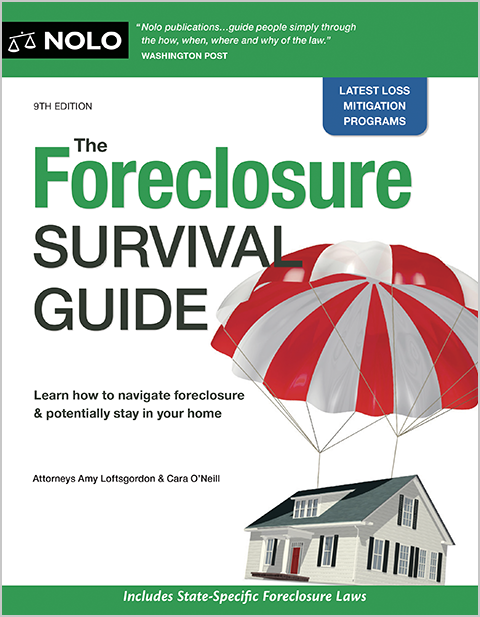Read about the restrictions and requirements the government has placed on Home Equity Conversion Mortgages (HECMs).
Because so many defaults have happened on reverse mortgages in the past, the Federal Housing Administration placed certain restrictions and requirements on Home Equity Conversion Mortgages (HECMs), including:
- a restriction on how much a borrower can take out in the first year and
- a requirement for a set-aside account if there's a chance the homeowner won't be able to keep up with the tax and insurance bills.
Before getting a reverse mortgage, you should understand how they work and learn the associated risks and requirements. You also need to watch out for reverse mortgage scams.
Once you learn more about this kind of loan, including the upsides and downsides and all of the requirements and restrictions, you might think twice about getting one.
How HECM Reverse Mortgages Work
The Federal Housing Administration (FHA) created one of the first types of reverse mortgages, called the "Home Equity Conversion Mortgage" (HECM). A HECM is the most common reverse mortgage product available, accounting for around 90% of the total market.
Basics About HECMs
With a HECM reverse mortgage, a borrower typically gets payments in the form of monthly payments or a line of credit from the lender. These payments then become the loan. The principal balance of the loan gets larger each time the lender sends a payment or when the borrower makes a draw on the line of credit until the borrower reaches the maximum loan amount. Borrowers can also get a reverse mortgage in a lump sum or a combination of monthly payments and a line of credit.
The loan amount is based on the equity or sale value of the house.
Who's Eligible for a HECM Reverse Mortgage?
Reverse mortgages are only available for homeowners who:
- are 62 years of age or older
- occupy the property as a principal residence, and
- own the home outright or have significant equity in the home.
You must also meet other requirements, such as you can't be delinquent on any federal debt, your home must be in good condition, and more.
When a HECM Must Be Repaid
The reverse mortgage loan can be called due under a number of different circumstances, like when the borrower:
- sells the property
- moves out (for example, to a nursing home for more than 12 months)
- doesn't meet the obligations of the mortgage (such as paying taxes and insurance), or
- dies.
Reverse mortgage lenders have historically been quick to call loans due and foreclose.
Restrictions on First-Year Withdrawals
Under rules that went into effect in 2013, borrowers can't access as much of the value in their home compared to the maximum amount available before this time. Before 2013, reverse mortgage borrowers could take out 100% of the principal limit all at once. But this led to many defaults in the following years because borrowers had used up the equity in the home and couldn't get more money or another loan.
Now, federal law limits the amount someone can borrow in the first year of the loan to the greater of:
- 60% of the approved loan amount or
- the sum of the mandatory obligations plus 10% of the principal limit.
Mandatory obligations include, for instance, existing mortgages and other liens on the property.
Example. Suppose Janelle has no mandatory obligations (like liens or an existing mortgage) and qualifies for a $100,000 reverse mortgage. She may get only $60,000 in the first year. If Janelle takes out the reverse mortgage as a one-time lump sum, she forfeits the remainder of the available principal ($40,000). But Janelle could choose a partial lump sum and get the remaining principal as a line of credit or monthly payments.
If Janelle had mandatory obligations, she could receive more money to pay those off. Say Janelle has $70,000 of mandatory obligations (like a home mortgage and a judgment lien) and qualifies for a $100,000 reverse mortgage. She can receive $80,000 in the first year. (Mandatory obligations: $70,000 + 10% of the principal limit [$100,000 x .10 = $10,000]: $10,000 = $80,000.) Janelle then gets $10,000 while the other $70,000 goes towards paying off the existing mortgage and judgment lien.
Set-Aside Accounts for Taxes, Insurance
With a HECM, the borrower is responsible for paying certain items, including:
- property taxes and
- hazard insurance premiums.
To ensure a borrower can stay up to date on taxes and insurance, the lender assesses the homeowner's financial situation when considering a reverse mortgage. If the lender determines that the borrower probably won't be able to keep up with paying for these items, it creates a "set-aside" account as part of the reverse mortgage.
A "set-aside account" is an amount of money that is a portion of the loan, which the lender retains to pay the taxes and insurance in future years. If a borrower has a set-aside account, the borrower receives less money from the reverse mortgage.
You Must Meet With a Housing Counselor
If want a HECM, you'll have to complete a counseling session with a HUD-approved counselor beforehand. But a counseling session alone might not provide enough information for you to fully understand what you're getting into.
HECM counselors have reported that it can take a couple of hours to explain how these mortgages work and cover all of the topics—including risks, costs, and consequences—that borrowers need to understand before taking out this kind of loan. This fact alone should give you an idea of how complex these kinds of mortgages are and that they're typically not a good idea. Even after a HECM counseling session, many borrowers still don't fully comprehend the reverse mortgage's terms and requirements.
For More Information
It is highly recommended that you proceed cautiously if you are considering taking out a reverse mortgage. Be sure you know the risks and consider talking to an estate planning, consumer protection, or elder-law attorney first.
For more information on reverse mortgages, visit the AARP's reverse mortgage webpage at www.aarp.org/revmort. To learn more about HECMs, go to www.hud.gov and enter "Home Equity Conversion Mortgage" in the search box to find a list of relevant links.

